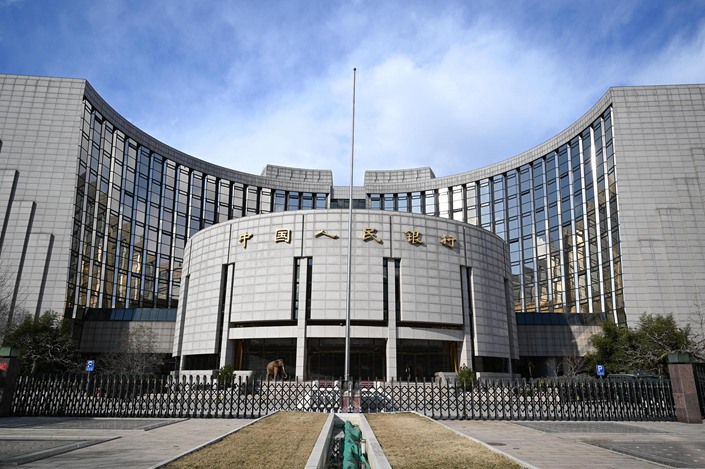PBOC Injects $78.8 Billion Into Virus-Stricken Economy With Reserve Ratio Cut

China’s central bank said it will pour 550 billion yuan ($78.8 billion) of cash into the financial system through a cut in the reserve requirement ratio (RRR) of some commercial lenders, responding to a call from the State Council for a reduction to support the economy as it struggles to recover from the coronavirus epidemic.
The People’s Bank of China (PBOC) said the RRR will be lowered by 50 to 100 basis points for all banks who meet certain criteria for lending to small and midsized enterprises and private companies under its inclusive finance program. Joint-stock banks that meet other criteria will get an additional 100 basis point reduction in their RRR, the central bank announced (link in Chinese) on Friday. A basis point is a hundredth of a percentage point.
The cuts, effective from March 16, will release an estimated 550 billion yuan for long-term lending, the central bank said. Of the total, 400 billion yuan will come from reductions related to the inclusive finance program and 150 billion yuan will stem from cuts for qualified joint-stock commercial banks, the PBOC said in an accompanying statement (link in Chinese).
“The PBOC is implementing a prudent monetary policy, keeping it flexible and appropriate, while also putting support for the recovery and development of the real economy in a more prominent position,” the central bank said in its statement. The cuts in the RRR do not represent a “flood-like stimulus” and are aimed at maintaining reasonable and adequate liquidity in the financial system, it said.
Interest-rate cuts
The central bank’s RRR cuts are “yet another step in its campaign to push down borrowing costs and shore up economic activity in response to the coronavirus outbreak,” Julian Evans-Pritchard, an economist with London-based research firm Capital Economics, wrote in a note. “This additional liquidity should push down interbank rates,” he said, adding that the central bank is likely to cut interest rates on its medium-term lending facility and reverse repo rates in coming months.
On Tuesday, the State Council, China’s cabinet, called for targeted easing measures and cuts in the RRR to shore up lending to small and micro businesses and reduce financing costs. Policymakers want to help companies resume operations following disruptions caused by Covid-19, according to a statement issued after a meeting chaired by Premier Li Keqiang.
China’s economy, which grew at its slowest pace in 29 years in 2019, has weakened significantly over the past two months due to the impact of the coronavirus outbreak and efforts to control the epidemic. The government imposed draconian travel restrictions across the country and ordered factories and offices to delay going back to work after the Lunar New Year holiday at the end of January.
Key measures of economic activity have hit record lows. The Caixin China General Manufacturing Purchasing Managers’ Index contracted at its fastest pace on record in February, while Caixin’s survey of purchasing managers in the services sector contracted at the steepest pace in more than 14 years.
China’s monthly data dump, which includes fixed-asset investment, retail sales and industrial output, will be released on Monday by the National Bureau of Statistics.
Since 2018, the PBOC has used targeted RRR cuts (link in Chinese) to encourage “inclusive finance” loans in an effort to channel more money to small businesses, agriculture, startups and low-income households. The PBOC currently allows a bank’s RRR to be 0.5 or 1.5 percentage points lower than the usual level if it meets certain requirements for these loans.
Contact reporter Timmy Shen (hongmingshen@caixin.com, Twitter: @timmyhmshen) and editor Nerys Avery (nerysavery@caixin.com)
Caixin Global has launched Caixin CEIC Mobile, the mobile-only version of its world-class macroeconomic data platform.
If you’re using the Caixin app, please click here. If you haven’t downloaded the app, please click here.

- MOST POPULAR




